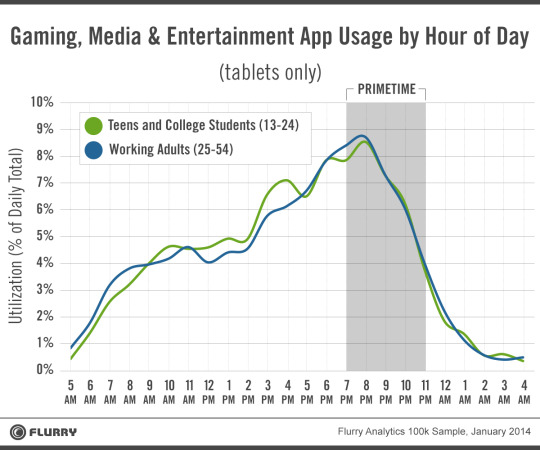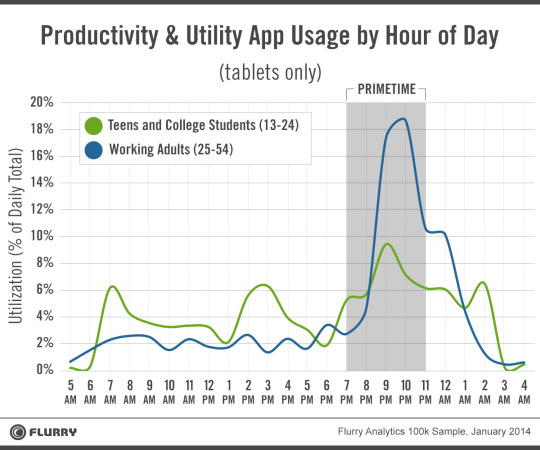When the iPad was first introduced in early 2010, we analyzed its early use cases and pegged it as a media consumption device as opposed to a personal productivity device and a PC replacement. The image we built for the iPad in particular and the tablet in general is that of a living room device rooted in gaming, media and entertainment with a potential to replace the physical magazine rack, the set-top box and eventually the television set. In the past four years, the tablet has had a major impact on the living room of an average US household. In fact, the iPad has become Apple’s lethal weapon in its assault on the living room. In addition to that, the tablet has taken a simultaneous path of replacing the PC and many analysts have labeled the rise of the tablet and the decline of the PC as the “Post-PC” era.
April 3rd, 2014 marked the four year anniversary of the iPad. Three weeks later and right after Apple’s quarterly announcement which signaled softness in iPad sales contrasted with strong iPhone sales, industry analyst Benedict Evans, posted a research note on iPad and tablet growth, claiming that both the Tablet and PCs are being cannibalized by smartphones, which is quickly becoming the ultimate computing device. This post, and many others, have prompted us to look into the tablet usage data and try to better understand usage patterns. In our analysis, we have focused on the following application categories: media and entertainment (inclusive of gaming) and productivity. We simply wanted to understand the usage of tablet as a media consumption device as well as a productivity (PC replacement) device. We have also segmented the audience into two segments: 13-24 (Teens and College Students) and 25-54 (Working Adults).
The Tablet Goes With Us to Work
As far as media consumption is concerned, it is clear that the Tablet is an all-day media consumption device for both generations. The chart below shows the usage patterns for both segments are strikingly similar. The data show that the tablet is no longer a living room only device, but a highly portable device and always-on device as far as media consumption is concerned. In fact TV-style prime-time (7:00 pm to 11:00 pm) accounts for only 33% of usage compared 65% to 70% for traditional TV. This finding of iPad pervasiveness is not surprising for teens and college students, the anecdotes simply support the findings. However we were quite surprised at the data on working adults - we expected significant let-up in tablet usage during work hours and heavier usage around traditional prime time.

Younger Consumers Use Productivity Apps All Day
When we looked at productivity apps and their usage we saw a completely different picture. The generation gap is clear in the usage chart below. Teens and College students are using their tablets as PC replacements and have four peak usage times: morning as they wake-up, mid-afternoon, mid-evening and late night for procrastinators. On the other hand, Working Adults predominantly engage in productivity apps right after prime time, most likely as their kids go to bed and the interesting stuff is off the television set. As the chart below suggests, working adults rarely use their tablets as PC replacements during working hours, even if it is with them as the first chart suggests. While there are multiple factors that can explain this trend, such as the lack of a keyboard, IT not sanctioning the tablet as a corporate device and Microsoft not releasing Office on the iPad till about a month ago, we didn’t expect the generational gap to be so profound.

There are many ways to interpret our findings. On interpretation could be that the tablet in general and the iPad in particular is having an identity crisis. It has become so many things to so many people and there isn’t really an 80% common use case. Another interpretation is that the tablet has an amazing opportunity ahead of it completely replacing the personal computer as teens and college students begin to enter the workforce and the new breed of personal productivity software designed bottoms-up for the tablet gets the chance to mature. The rise of productivity app usage over the past year and the introduction of Microsoft Office for iPad gives us enough reason to believe that the second interpretation is the good one. In fact it is good enough for Tim Cook to call the iPad “the fastest growing product in Apple’s history” at Apple’s earnings call and to predict that “the tablet market will surpass the PC market”. It is our interpretation of the data, but it is Apple’s (and other tablet manufacturers’) big bet.